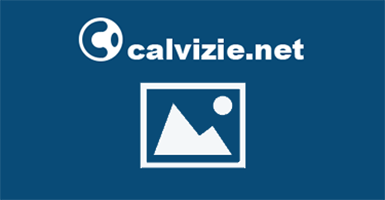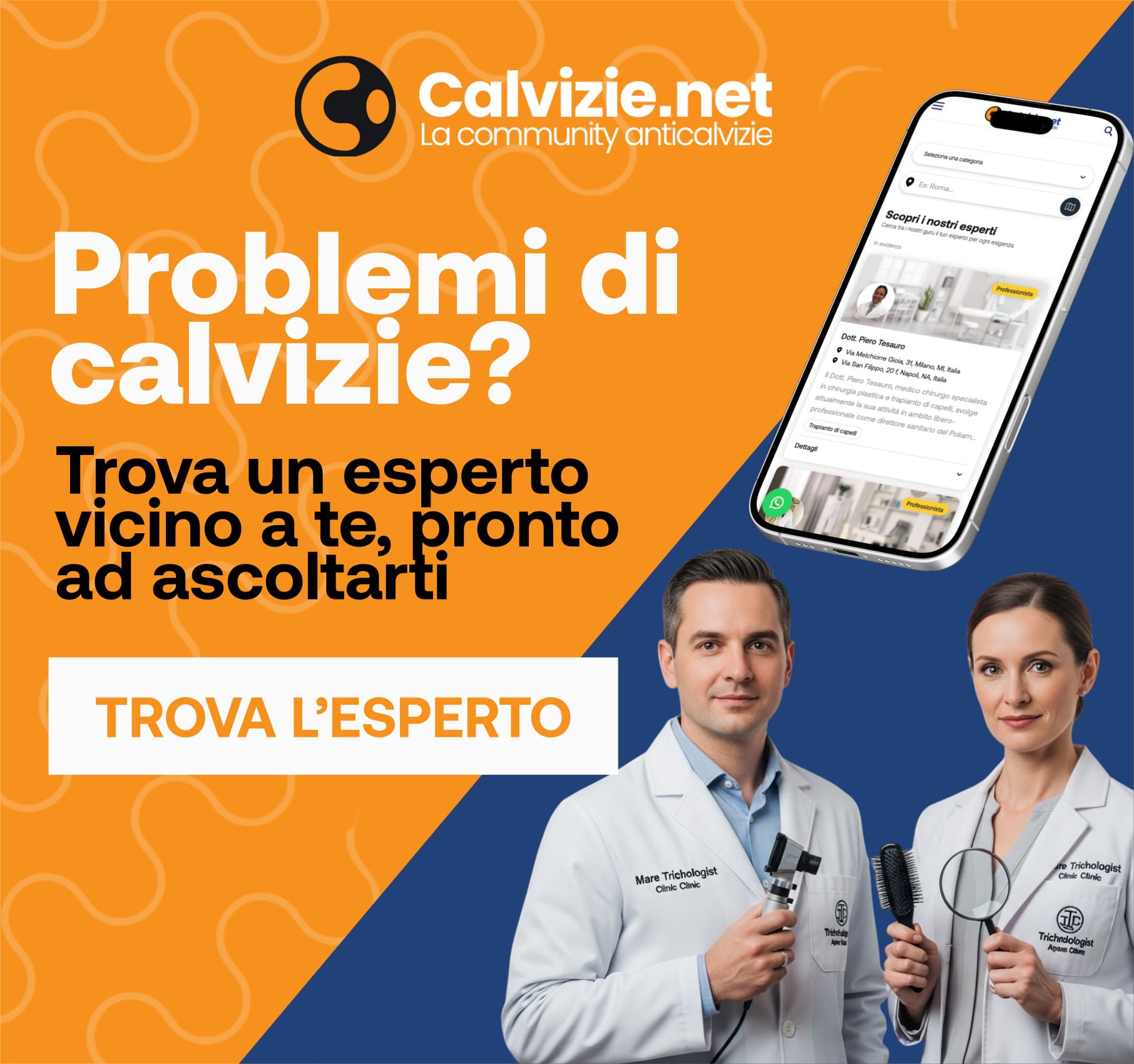Title: Stanford NAC Study: Glutathione Level Predicts Survival
Author: John S. James, Published: March 7, 1997
A small randomized controlled trial of oral N-acetylcysteine(NAC) — organized primarily by Drs. Leonard and Leonore Herzenberg, both Ph.D., at Stanford University, and designed by them and Greg Dubs, Ph.D., who conducted the trial — was run in San Francisco in 1993 and 1994. A report from this study was published this week in the PROCEEDINGS OF THE NATIONAL ACADEMY OF SCIENCES, USA(1); it was also presented at a major immunology conference in San Francisco on February 22, receiving television and newspaper coverage. The basic findings were:
(1) For persons with a CD4 count under 200, an abnormally low level of glutathione — inside CD4 T-cells in the blood –was remarkably predictive of poor survival. (Glutathione is the major defense of those cells against oxidative stress.) Persons with a CD4 count under 200, who also had very low glutathione levels, had an estimated three-year survival a slow as 20 percent — compared to 60 to 80 percent survival for those with CD4 below 200 but with adequate glutathione levels. (Survival results were presented for those with CD4 counts under 200, since in the three years after the blood measurement, there were not enough deaths to analyze in those with counts above 200. However, the survival difference was also statistically significant when everyone was included regardless of CD4 count.)
(2) Oral NAC helped to replenish low glutathione in blood cells. (This was at issue because of a widely circulated report, now shown by this study to be erroneous, that NAC was not bioavailable. Bioavailability was also shown in a recently published study from another group.(2))
These findings alone do not prove that NAC is beneficial (since it would be possible that the low glutathione levels were only an incidental result of declining health, and not a cause of the decline). This study was not designed to test whether or not NAC was helpful, and it did not have enough volunteers to do so. However, followup studies two to three years later showed that persons who were given or chose to take NAC during the trial had considerably better survival than similar subjects who did not take NAC. But since the trial was not set up to make this comparison, the researchers emphasize that a larger controlled trial will be needed to determine for sure whether NAC has benefit.
The results of the Stanford study could best be described under separate headings: (1) glutathione levels as predictive of survival, without reference to NAC or other treatment; and (2) a controlled trial showing the bioavailability of NAC;and (3) uncontrolled observations suggesting that there may have been a survival benefit from taking NAC.
Note: An earlier report of this study was presented in May 1996 at the Oxidative Stress and Redox Regulation conference at the Institut Pasteur in Paris. That presentation was described in AIDS TREATMENT NEWS #250, July 5, 1996. See “For More Information: Paris Conference,” below.
The possible use of NAC to treat HIV disease was first suggested by Dr. Wulf Droge, in Heidelberg.
Note: AIDS TREATMENT NEWS may publish a followup article on NAC and its use. If you have information that should be considered, let us know.
Glutathione Levels Predict Survival
A total of 204 HIV-positive volunteers were screened for this study; 107 of them had a CD4 count greater than or equal to200, and were excluded from most further analysis. Of the 97 who had a count less than 200, only 37 entered the NAC trial and had complete data to analyze. The 60 who did not enter the study are referred to as the no-trial cohort; the followup on these 60 provided the natural-history data on the survival consequences of low glutathione levels (in the absence of treatment attempting to correct the low levels).
These 60 volunteers with a CD4 count under 200 did not enter the NAC trial for various reasons. Thirty nine of them were excluded because their glutathione levels were not low enough. (Since this trial was designed to study the effect ofNAC on those with abnormally low glutathione levels, those with normal or near-normal levels were excluded. Since the volunteers had no way to know in advance whether or not their glutathione levels were low, many were screened who did not qualify for the NAC trial.) Others either declined to enter the study, were judged non-compliant, had a lab value outsidethe allowable range, or had some other protocol-definedexclusion. For each of these 60 people, a glutathione level was measured only once — and then survival was determined two to three years after that measurement.
Glutathione levels were measured within individual cells,using flow cytometry — the same technology used to measure CD4 and CD8 cell counts. Blood cells from the patient were treated so that the glutathione within the cells was changed chemically, to a florescent substance which glowed when hitby certain laser light. The strength of the glow, indicating the concentration of glutathione in that cell, was measured as the cells were passed single file through a small tube,and the result for each cell was separately recorded by a computer. To help check that the technology was working correctly, the glutathione level in CD4 cells was correlated with that in the blood (measured by more standard chemicaltests), and with that in CD8 cells, monocytes, natural killer cells, and B-cells; the glutathione levels turned out to be comparable no matter where they were measured. (The Herzenbergs developed the use of flow cytometry for medical purposes; their laboratory is among the best in the world in using this technology.) Unfortunately, the level of glutathione is difficult to measure, and therefore the test is only available for research at this time, not for practicing physicians.
Two different statistical tests (logistic regression, and Kaplan-Meier analysis) were used to study survival differences related to glutathione levels in CD4 cells. In both cases, the results were highly statistically significant, showing that those with abnormally low levels had worse survival.
The survival difference was large. The 60 patients in the no-trial cohort were divided into a high-glutathione group of 26 patients, and a low glutathione group of 34 patients. (The best cut-off value to divide the high vs. the low group was calculated by a statistical procedure called ROC analysis.) Three-year Kaplan-Meier estimates are about 60 to 80 percent survival in the high-glutathione group, vs. as low as 20 percent survival in the low-glutathione group. (Final figures are not available because some of the volunteers have not reached the three-year point yet; data are still being collected.) Everyone in both of these groups had a starting CD4 count under 200, and did NOT enter the randomized trial of NAC. The researchers told AIDS TREATMENT NEWS that the glutathione level was particularly useful in predicting the survival of persons with low CD4 counts, even those with counts below 50. (Note that the three-year period usually started in 1994, before protease inhibitors and other recent HIV treatments were available; survival rates would be higher today.)
Remember that these results do not prove that the low glutathione level necessarily CAUSED the worse survival. Glutathione levels can become abnormally low in many illnesses, not just HIV infection. At this time no one knows for sure whether the low glutathione levels help to cause the worse HIV survival, or are just incidental. Therefore, while the data suggest that measures to restore the missing glutathione may be helpful, this point is still unproven.
NAC Bioavailability: A Controlled Trial
NAC (N-acetylcysteine) has long been considered an”alternative” HIV treatment (which, in practice, means a treatment which is being used despite the lack of well-funded development). For several years it has been one of the most popular products sold in the AIDS buyers’ clubs (it is also widely available in health-food stores). NAC is a chemical variant of the amino acid cysteine, which is found in most proteins in the diet; NAC is converted into cysteine in the liver, before reaching the general circulation. (Using cysteine itself as a dietary supplement can be harmful and is not recommended.)
Glutathione is a peptide which consists of three amino acids: cysteine, glutamic acid, and glycine. Usually the cysteine is the one in shortest supply in the body; that is why taking NAC has been proposed by a number of researchers as an efficient way to raise glutathione levels. (See “For More Information: Paris Conference,” below.)
A major reason for the Stanford trial was to confirm that oral NAC does indeed raise the level of glutathione in CD4 and other immune-system cells. Due to a wide spread misunderstanding of an earlier NAC study done several years ago at the U.S. National Institutes of Health, it has been widely believed by AIDS physicians that if NAC is taken orally, it is useless because almost none of it gets into the bloodstream. (For a short history of how this misunderstanding occurred, see “NAC: First Controlled Trial, Positive Results,” AIDS TREATMENT NEWS #250, July 5, 1996).
A more detailed report of the Stanford trial is being prepared for a separate publication. Seventy eight volunteers were randomized to receive either NAC or placebo, but only 53 of them had full data available at the end of the trial.(This includes persons with CD4 count above 200, as well as those below 200; those in the latter group were included in the survival analysis.) By the end of the eight-week trial, average glutathione levels in whole blood were significantly raised in patients who were randomized to receive NAC, while the average level stayed the same for those randomized to placebo — showing that the NAC was indeed bioavailable. (A different research group also found that NAC was bioavailable, in that it returned low levels of cysteine to normal, in blood plasma in persons with HIV and CD4 counts over 200.(2))
The Stanford study used a very high dose of NAC — a total 3200 to 8000 mg per day, in divided doses. This dose was chosen because 8000 mg had been found to be less than the maximum tolerated dose in the National Institutes of Health study mentioned above — and the protocol provided a standard way for volunteers to step down their dose if necessary. According to the researchers, lower doses may be sufficient for routine use. We talked to the Healing Alternatives Foundation, the buyers’ club in San Francisco; they said that dose recommendations have varied, but they do not find anybody, or hardly anybody, using doses as high as those in the Stanford trial. Some people are taking 500 mg, two to four times a day (1000 mg to 2000 mg per day in divided doses); others take somewhat more. One of the researcherstold us that some people take a low or moderate dose, but then add more NAC at times of stress, such as surgery or infection.
There have been reports of high doses causing unpleasant side effects, including gastrointestinal distress or skin rashes; but the Stanford trial found that these reactions occurred equally in the NAC and placebo groups. (The side effects could be due to other substances in the NAC or placebo formulation, which ordinarily is used at a lower dose.) Neither the Stanford trial nor the earlier NIH trial found any serious adverse effects of NAC. Unfortunately there is no dose-response data (from the Stanford study or otherwise) to show whether or not higher doses are more effective in raising abnormally low intracellular glutathione levels, or whether lower doses are sufficient.
Nutritionist Lark Lands, Ph.D., told AIDS TREATMENT NEWS that gastrointestinal effects are reduced if NAC is taken with food — and that, unlike some amino acids, NAC does not need to be taken on an empty stomach for good absorption.
The bottom line is that there is no general agreement on the best dose and usage of NAC. Different doses and regimens arecommon — but all the doses in common use are lower than those in the Stanford trial.
NAC and Survival: Uncontrolled Data Only
While the NAC study reported here included a controlled trial, that trial was not designed to test whether using NAC could provide clinical benefit. One reason is that the controlled trial was too small; only 37 volunteers with CD4 count under 200 completed the trial and have full data available for analysis. Also, the controlled trial (NAC vs.placebo) lasted only for two months, and then the participants were offered six months of open-label NAC, which nearly all chose to accept. Therefore, the best the researchers could have done was to compare six months vs.eight months of NAC; even with a much larger trial, it might be hard to detect a three-year survival difference between two arms which were so similar.
Although this trial cannot provide controlled data on whether or not use of NAC can improve survival, it was noticed that those who took NAC had considerably better survival than would have been expected based on their CD4 counts and glutathione levels. To investigate this, the researchers retrospectively collected two matched groups, a NAC group (25volunteers) and a no-NAC group (19 volunteers).
The 25 in the NAC group were all enrolled in the NAC trial.Thirteen of them were randomized to NAC, and the other 12 were randomized to placebo for the 8-week controlled study, but then chose to take NAC during the 6-month open-label period.
The 19 in the no-NAC group were those who met the basic criteria for entry into the trial, but for various reasons did not take any significant amount of NAC. “Three completed the placebo arm and declined open-label NAC; 9 left the trial, mainly within a week, citing symptoms such as nausea and rash, which were similar to symptoms reported by subjects who completed the trial; five declined to enter for personal reasons; and 2 were disqualified for trial entry only because they had recently changed their reverse transcriptase inhibitor regimen.”(1) There were no significant differences between these groups in “absolute counts and (glutathione) levels for CD4 and CD8 naive, memory, and overall T-cell subsets, and for B cells, monocytes and NK cells; hematocrit and other clinical laboratory tests; Karnofsky score; age,weight, and previous history of opportunistic infections. Ofover 60 measurements tested, only plasma thioredoxin levels showed a significant difference between the NAC and no-NAC groups (the NAC group was lower, p=0.01).”(1)
Kaplan-Meier estimates for survival showed a statistically significant advantage for the NAC group (p=0.002). For the group that took NAC for six to eight months, mortality was pushed back by about a year — even in this group which started the trial with a low probability of survival, due to having both a low CD4 count and a low glutathione level. When the first death occurred in the NAC group, about half of those in the no-NAC group had died.
The limitation of this data, of course, is that it is retrospective — and membership in the NAC vs. no-NAC group was determined in large part by self-selection.
“The data from our study, taken as a whole, is consistent with low glutathione being associated with poor survival,”said Leonore Herzenberg, one of the principle designers of the study. “The major question now is whether this low level is only incidental, or is it a cause of the poor survival’ The fact that those who took NAC survived longer than a matched group which did not is consistent with the low glutathione level being a cause [of increased mortality]. But a controlled study designed to answer this question will be necessary for proof.”
Comment: Where Do We Go from Here’
The published paper notes that, “If these findings are confirmed in prospective, long-term trials, they will provide a foundation for the use of NAC as an inexpensive, nontoxic adjunct therapy for HIV/AIDS, potentially valuable even in remote locations where only minimal medical supervision is available.”
The problem now is how to get definitive evidence on whether or not NAC improves survival of certain persons with HIV (those with low intracellular glutathione levels). To get this evidence, it would be necessary to run a larger and different survival trial — which for many reasons would be difficult to do. Persons would have to be randomly assigned to take either NAC or a placebo, to see if those given NAC lived longer. There would be a number of practical obstacles:
* Volunteers who had given informed consent would realize that they could easily obtain NAC on the side. Ways of preventing access — such as running the trial in a developing country where healthcare was not available –would present ethical problems.
* Because protease inhibitors and other recent advances in HIV treatment are reducing AIDS death rates, it would be more difficult to show a survival difference in such a trial.(Volunteers in both arms of the NAC study would have to be allowed to use standard treatments, of course.)
* No validated, accepted “surrogate markers” are available for such a trial. NAC is not an anti retroviral, and would not be expected to have any dramatic effect on viral load.
* Because NAC is low cost and readily available, there is little incentive to study it. Therefore it would be difficult to finance the trial.
Whether or not a controlled trial is workable, patients might consider using NAC without additional trial results, since there is little “down side” because this treatment is safe and inexpensive. The Stanford study(1) also showed that persons with HIV — and especially those with a CD4 count under 200 — are likely to have substantially lower intracellular glutathione levels than those who are HIV negative. The more advanced the HIV disease, the more likely it appears that intracellular glutathione levels may be in what seems to be a dangerous range. No test for glutathione is yet available for practicing physicians — but since there is little reason not to use NAC, people may consider using it just in case their levels are low.
This study and others also suggest that use of drugs which are known to lower glutathione — such as acetaminophen,contained in Tylenol(R) and many other pain relievers — beminimized or avoided by persons with advanced HIV infection.(See “Glutathione-Depleting Drugs: Petition to the FDA,” in this issue.)
Drinking alcohol also lowers glutathione levels. In 1993, an FDA advisory committee recommended that the FDA issue a warning that acetaminophen could be dangerous with high alcohol use, because it could depress already-low glutathionelevels. (An extreme deficiency of glutathione will damage the liver and kidneys, and can cause death.) The FDA did not require the warning, however — probably because many experts wanted a broader investigation, including aspirin and other drugs, to be completed first.
For More Information: Paris Conference
A major conference about redox (oxidation and reduction) chemistry in AIDS and other diseases took place May 21-24,1996 at the Institut Pasteur in Paris. The meeting,”Oxidative Stress and Redox Regulation: Cellular Signaling, AIDS, Cancer, and Other Diseases” divided the presentations into the following topics:
* Oxygen free radicals: origin and targets.
* Reactive oxygen species and cellular mechanisms: cell differentiation, proliferation, apoptosis.
* Transduction mechanisms.
* Oxidants and intracellular signaling.
* Antioxidant regulation in biological systems.
* Oxidative stress and AIDS.
* Oxidative stress, cancer, and other diseases.
N-acetylcysteine (often spelled N-acetyl-cysteine) is mentioned in about 30 of the abstracts presented at the conference.
The program and abstracts are available at http://www.immunet.org; on that page, select “Redox Conference Abstracts” in the directory. You can search for abstracts containing one or more key words; for example, try looking for “acetylcysteine” (and also for its other spelling, “acetyl-cysteine”).
References
1. Herzenberg LA, De Rosa SC, Dubs JG, Roederer M, Anderson MT, Ela SW, Deresinski SC, and Herzenberg LA. Glutathione deficiency is associated with impaired survival in HIV disease. PROCEEDINGS OF THE NATIONAL ACADEMY OF SCIENCES, USA March 4, 1997; volume 94, number 5, pages 1967-1972.
2. 2. Akerlund, B., C. Jarstrand, B. Lindeke, A. Sonnerborg,A.-C. Akerblad, O. Rasool. Effect of N-acetylcysteine (NAC)treatment on HIV-1 infection: a double-blind placebo-controlled trial. EUROPEAN JOURNAL OF CLINICAL PHARMACOLOGY1996; volume 50, pages 457-461.














